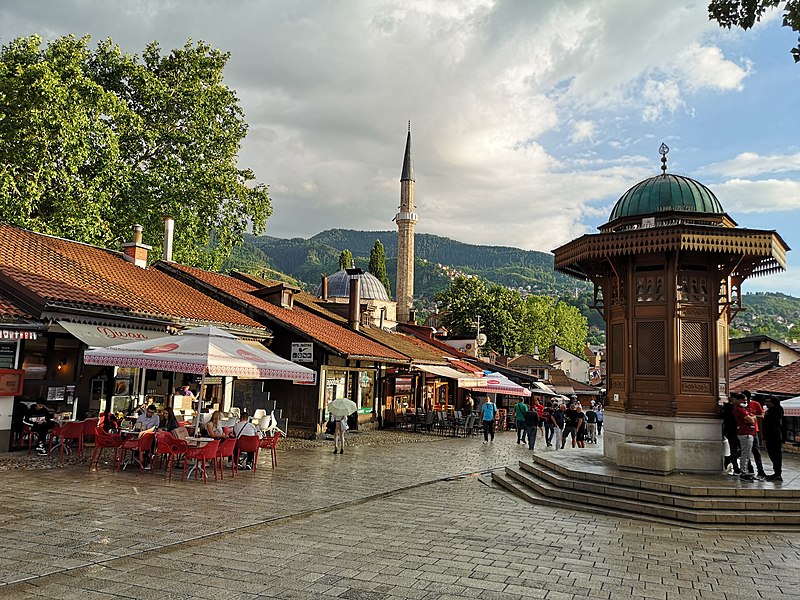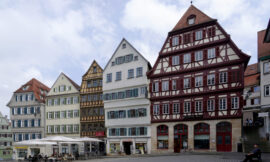Baščaršija, often referred to as the heart and soul of Sarajevo, is a captivating historic district nestled in the heart of the Bosnian capital. Steeped in centuries of history, culture, and tradition, Baščaršija is a bustling labyrinth of narrow streets, bustling markets, and stunning Ottoman-era architecture that transports visitors back in time to the city’s golden age.
The name Baščaršija derives from the Turkish word “baš” meaning “head” or “main” and “čaršija” meaning “marketplace,” reflecting the district’s origins as the main market and commercial center of Sarajevo during the Ottoman period. Founded in the 15th century by the Ottoman Empire, Baščaršija quickly became the beating heart of the city, attracting merchants, craftsmen, and travelers from across the region.
One of the most iconic landmarks in Baščaršija is the Sebilj Fountain, a wooden kiosk-like structure that stands at the center of the main square. Built in the 18th century, the Sebilj Fountain is not only a symbol of Baščaršija but also serves as a popular meeting point and gathering spot for locals and tourists alike.
As visitors explore the labyrinthine streets of Baščaršija, they are treated to a sensory feast of sights, sounds, and smells. The district is home to numerous traditional shops, or dućans, selling everything from handmade crafts and souvenirs to freshly roasted coffee, spices, and sweets. The aroma of freshly baked burek, a traditional Bosnian pastry filled with meat or cheese, wafts through the air, enticing passersby to stop and indulge in a delicious snack.
Baščaršija is also famous for its bustling bazaars and markets, where vendors display their wares in colorful stalls lining the narrow streets. The Gazi Husrev-bey Market, named after the Ottoman governor who founded it in the 16th century, is one of the oldest and most vibrant markets in Baščaršija, offering a kaleidoscope of goods, from traditional Bosnian handicrafts to exotic spices and textiles.
In addition to its markets and shops, Baščaršija is home to several historic mosques, reflecting the district’s Islamic heritage and cultural significance. The Gazi Husrev-bey Mosque, one of the largest and most important mosques in Bosnia and Herzegovina, is a stunning example of Ottoman architecture and a focal point of religious life in Sarajevo.
Another notable landmark in Baščaršija is the Morića Han, an ancient caravanserai that once housed travelers, merchants, and their animals. Today, the Morića Han serves as a cultural center and restaurant, where visitors can sample traditional Bosnian cuisine and learn about the history of this historic building.
Throughout its long and storied history, Baščaršija has weathered wars, earthquakes, and other challenges, yet it has retained its unique character and charm. Today, the district stands as a testament to Sarajevo’s resilience and multicultural heritage, offering visitors a glimpse into the city’s past while embracing the spirit of its vibrant present. Whether exploring its historic landmarks, shopping in its bustling markets, or simply soaking up the atmosphere in one of its many cafes or tea houses, a visit to Baščaršija is sure to be a memorable experience for anyone exploring Sarajevo.



